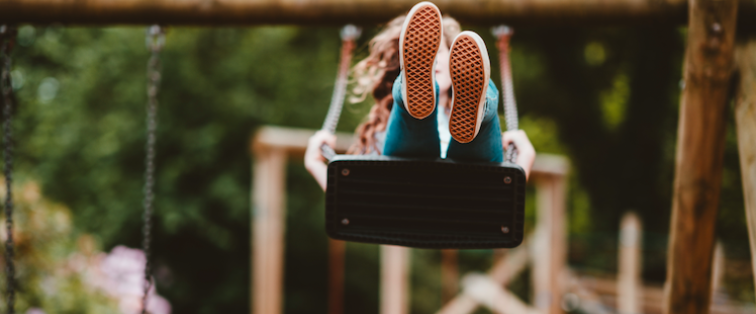Spiking Rates of Gun Purchases During COVID-19 Pandemic Put Youth at Risk

Editor’s note: This blog post originally appeared on Children’s Hospital of Philadelphia’s Center for Injury Research and Prevention’s blog.
A note from Joel Fein, MD, MPH: As two public health crises converge in the U.S. – COVID-19 and gun violence – it’s vital to explore and understand the unique risks for children and consider policy options to keep youth safe and healthy in their homes and communities. I am honored to be a co-author on this post by my CHOP colleague Polina Krass, MD, an attending physician in the Divisions of Emergency Medicine and Adolescent Medicine. We also gratefully acknowledge Julia Sabrick’s excellent contributions to this work.
Since the beginning of March, there has been an increase of 43% in the number of children killed unintentionally by firearms. Staggering statistics on child victims of firearms have long been a part of the U.S.’s troubling record of gun violence. But now, pediatricians and families are feeling the pressure from two competing epidemics: COVID-19 and this country’s long-existing epidemic of gun violence, exacerbated recently by soaring numbers of individuals purchasing guns.
March 2020 saw more Google searches about buying a gun than at any time in history. FBI background checks have skyrocketed, totaling about 3.7 million in March alone; this represents an 85.3% increase in firearm sales compared to March 2019.
Experts believe this spike is driven by fear: the uncertainty of the pandemic combined with a mistrust of social institutions. However, the belief that guns will offer protection in the wake of a pandemic is misguided. Crime rates are actually reaching record lows globally. Here in Philadelphia, property and violence offenses are down to their lowest levels since February 2019, despite a drastically increasing rate of firearm crime since 2014.
Why Children Are Vulnerable to Gun Violence
But while crime outside of the house is decreasing, the risk of violence for our children due to guns in the home is only increasing. Prior to the pandemic, guns were the second leading cause of death for children and adolescents. The pandemic is a perfect storm of risk factors that could move guns to first place:
- Kids aren’t in school. Research shows that kids are more likely to get shot—intentionally or unintentionally—when they aren’t at school. At home, they have more unstructured time, and they aren’t always being watched by a parent or caregiver.
- Mental health is at risk. The pandemic is causing increased stress for kids and their parents, and accessing mental health care may be more difficult. Stressors (especially financial ones), not having access to a mental health professional, and guns in the home all independently increase the risk that a teen will commit suicide.
- Domestic violence is on the rise. Stay-at-home orders mean an increase in “contact time” between domestic abusers and the abused, and the rate of violent domestic abuse is thought to be increasing around the world as a result. Children are more likely to be injured or killed by a gun—or bear witness to someone else being killed by a gun—when there is more domestic violence in the home. Read more about the impact of social distancing on victims of domestic violence and recommendations for frontline providers in a blog from my CHOP colleague Ashlee Murray, MD, MPH.
- There are more guns around, and they are less likely to be locked up. Individuals using guns for protection are more likely to keep their guns unlocked and loaded. We have decades of research showing that these factors increase the risk of suicide, homicide and unintentional gun injury in kids.
Taking Action Through Policy
The good news is that we can still adopt preventative strategies. In April, Virginia governor Ralph Northham signed several new gun restrictions into law including universal background checks, a “red flag bill” allowing authorities to temporarily take guns from people deemed a danger to themselves or others, and limiting handgun purchases to once per month. This is an opportunity for other states to follow Virginia’s lead.
Three specific policies may mitigate the ripple effects of the pandemic on child health:
- Strengthening Child Access Prevention (CAP) laws, which hold gun owners accountable for not storing their guns safely, coupled with programs that help gun owners obtain the storage solutions they need to keep kids safe.
- Implementing universal background checks, which prevent the transfer of guns without a background check. A federal bill that mandates this approach was passed by the U.S. House of Representatives in 2018 but has not been voted on in the Senate.
- Extreme risk protection orders, which allow experts to temporarily remove guns from the home of someone who is at imminent risk of killing themselves or others.
Read more about these polices in a previous blog authored by my CHOP colleague Ruth Abaya, MD, MPH.
What’s Next?
The two million additional guns purchased since the onset of the COVID-19 pandemic are a part of the new reality that our kids and teens will grow up in. We urgently need to research the impact of these guns on child health, and to implement the best available policies to prevent even more tragedy from taking place.
Here at CHOP, the Violence Prevention Initiative and PolicyLab are collaborating to create a new resource that will outline existing research and provide policy and practice recommendations to protect children against unintentional firearm injury. Our hope is that this brief will serve as an evidence-based tool for policymakers, health care providers, and local leaders to keep families safe in their communities and beyond.
Joel Fein, MD, MPH, is a professor of pediatrics and emergency medicine at the Perelman School of Medicine at the University of Pennsylvania and an attending physician in the Emergency Department at Children's Hospital of Philadelphia (CHOP). He is a co-director of CHOP's Violence Prevention Initiative at the Center for Injury Research and Prevention.

